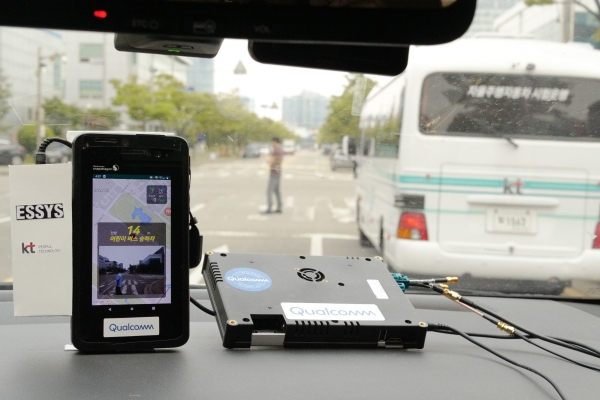
South Korean ministries have started discussion over which technology standard to use for cooperative intelligent transport system (C-ITS) in the country.
The Ministry of Economy and Finance will coordinate with the Ministry of Land, Infrastructure and Transport and the Ministry and Science and ICT to decide whether DSRC(dedicated short-range communications) or C-V2X (cellular vehicle-to-everything) are the appropriate standard.
The country’s Transport ministry have been running a trial project using DSRC since 2014.
The discussion between the multiple ministries involved means the government is likely planning to readjust its focus from DSRC to C-V2X, people familiar with the matter said.
The people said Mercedes-Benz recently sent a letter to the South Korean government saying C-V2X was the global standard for C-ITS and that the company needed support for the standard to enter the market here.
The government had discussed with multiple experts that are all recommending C-V2X over DSRC, they said.
However, a spokesperson for the Transport ministry said there are yet sufficient trial data to show that C-V2X was more advantageous in autonomous driving over DSRC.
The ministry’s position is to run DSRC as it has verified safety over years of trial while also trialing C-V2X, they said.
Despite this, companies that have focused on developing DSRC technologies based on the Transport ministry’s previous trials are strongly protesting the government’s redirection towards C-V2X.
Six companies, including Carnavi and Chemtronics, have formed an alliance earlier this month to protest against the move. The companies are planning to visit the Transport ministry and ICT ministry to find out the precise position of the government.
A person in one of these companies said some national projects on C-ITS that were planned by the Transport ministry this year have been halted.
These changes has been interpreted as the government planning to push C-V2X over DSRC.
DSRC standard was set by the IEEE in 2012. C-V2X was set by the 3GPP in 2017. C-V2X, which is based on 5G networks, has been touted as being able to support 20Gbps speed for cars running at 500km per hour.
Globally, the US and China has chosen C-V2X as their standard for C-ITS. China ran a LTE-V2X trail in 2018 and has chosen C-V2X as the standard for C-ITS. The US Federal Communication Commission announced in May that C-V2X will be the standard.
Mercedes-Benz, BMW, Audi and other European car makers are also support C-V2X.


